Choosing the best filler for exterior wood is a critical decision that can mean the difference between a lasting, invisible repair and a job that fails within a year.
The external timber endures continuous weather attacks while it expands and contracts because of temperature and moisture fluctuations.
The suitable filler needs to serve as more than a hole filler because it must maintain flexibility and durability while providing complete weather resistance.
The professional decorators in our team have accumulated decades of experience by using all available wood fillers through their work with various wood filler products. We understand that a one-size-fits-all solution fails to achieve success.
A small cosmetic repair on a window frame requires a different solution than a large, structural repair on a rotted sill.
This guide is designed to be the most comprehensive resource available, going far beyond basic recommendations to give you the detailed insights you need to select the perfect product for any scenario.
The evaluation will cover all types of exterior wood fillers which include high-performance epoxy systems that serve major restoration needs and ready-mixed options suitable for daily repair work.
The evaluation will examine top brands through professional choices Repair Care and Timbabuild and Toupret and trusted brands Ronseal and Polycell. The guide includes information about essential preparation products such as wood hardeners and finishing products including sealants to protect your repairs from future damage.
Whether you are a seasoned professional or a dedicated DIYer, this guide will equip you with the knowledge to achieve flawless, long-lasting results on all your exterior woodwork.

Before selecting a product, it is essential to understand the main categories of wood fillers. The substances exist in distinct chemical forms which dictate their particular applications and their respective advantages and disadvantages. Choosing the right type is the first step to a successful repair.
| Filler Type | Best For | Flexibility | Durability | Price Point |
| Epoxy Systems | Large, structural repairs, rotted wood | High | Exceptional | Premium |
| Two-Part Fillers | Medium-sized repairs, deep holes | Medium | High | Mid-Range |
| Ready-Mixed Fillers | Small cracks, cosmetic fixes | Low-Medium | Medium | Budget |
| Wood Hardeners | Preparing soft, punky wood before filling | N/A | N/A | Mid-Range |
For any serious, long-term exterior repair, a two-part epoxy system is the undisputed professional choice. These systems contain two components which consist of a resin and a hardener that produce a chemical reaction when combined to form a strong flexible waterproof material.
It is not just a filler; it is a structural replacement for the wood itself. For a deep dive into these systems, see our Timbabuild vs. Repair Care comparison guide.
The traditional two-part fillers which consist of polyester-based materials people often confuse with epoxy systems because both contain filler paste and chemical hardener components.
The high-strength properties of these fillers make them suitable for medium-sized repairs which exceed the capabilities of ready-mixed fillers. These materials achieve their final hardness state within 30 minutes of curing.
These are the most common type of filler for general DIY use. They come pre-mixed in a tub or tube and are typically water-based.
The products prove useful for fixing small defects such as nail holes and surface cracks, but they do not offer adequate strength or flexibility to handle substantial exterior repair tasks. The product tends to shrink and develop cracks when users apply it in thick layers.
A wood hardener functions as an essential preparation product which helps treat soft or slightly rotted timber but it does not serve as a filler material. The solvent- or water-based liquid solution penetrates into the punky wood fibres before solidifying to form a strong base which the filler can stick to.
Applying filler directly to soft wood is a recipe for failure. For more on this, check out our guide to the best wood preservatives.
Professionals choose epoxy materials to create repairs which need to maintain their condition for an indefinite time period. These systems serve as the highest quality solution for major structural repairs of exterior timber in period properties because they enable original joinery preservation.
Best for: Ultimate Reliability and Availability
Repair Care is the industry benchmark for a reason. Large contractors prefer their DRY FLEX 4 system because it offers proven reliability which makes it the perfect choice for big projects that need established systems.
The system operates with high durability while offering flexibility and including an extensive training system for support. Its biggest advantage is being readily available at nearly every Dulux Decorator Centre in the country.
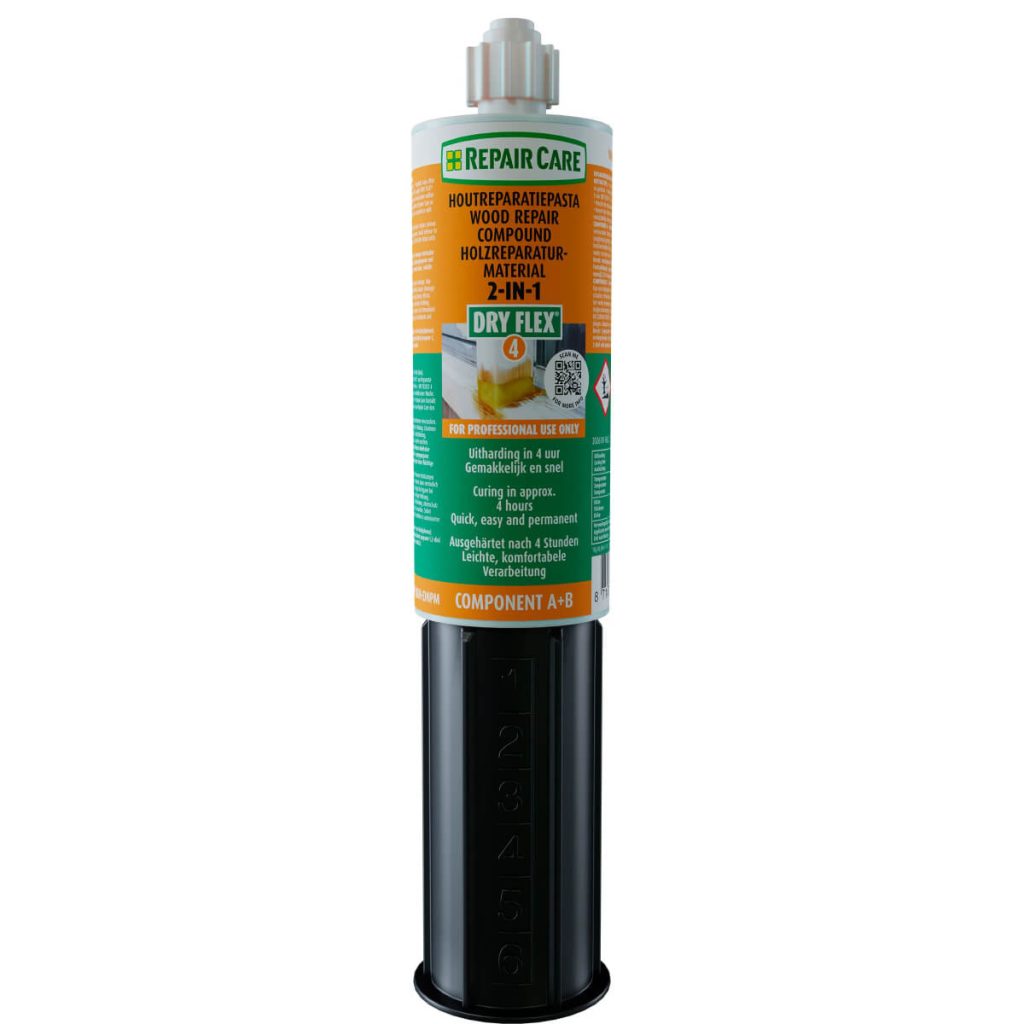
Best for: The 50-Year Guarantee
Timbabuild has established itself as a formidable competitor, offering a UK-made system that provides exceptional quality and an incredible 50-year guarantee.
Professionals often praise Timbabuild for being easier to sand to a fine finish than its competitors. It is the perfect choice for those who want the absolute best long-term performance.
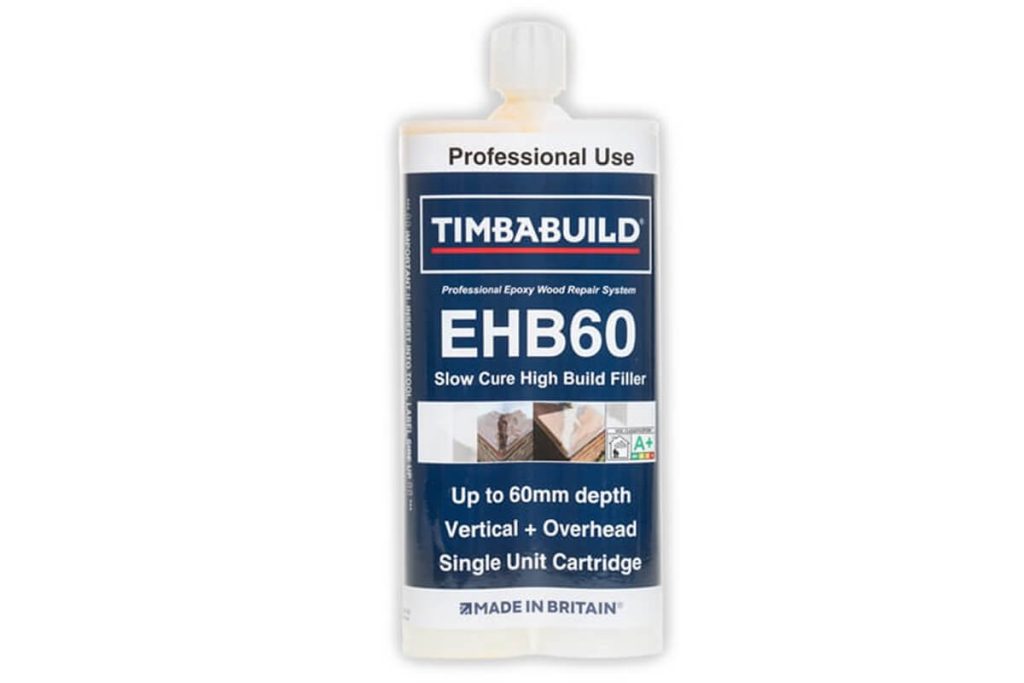
Best for: Best Value for Money
Oxera has established itself as a game-changing solution for professionals who need to stay within their financial limits. The product delivers nearly identical performance to high-end brands at a much lower price point.
The savings prove too attractive for small businesses and sole proprietors because the service mainly operates through online channels. The product delivers professional-grade epoxy repair at a price which remains affordable for most users.
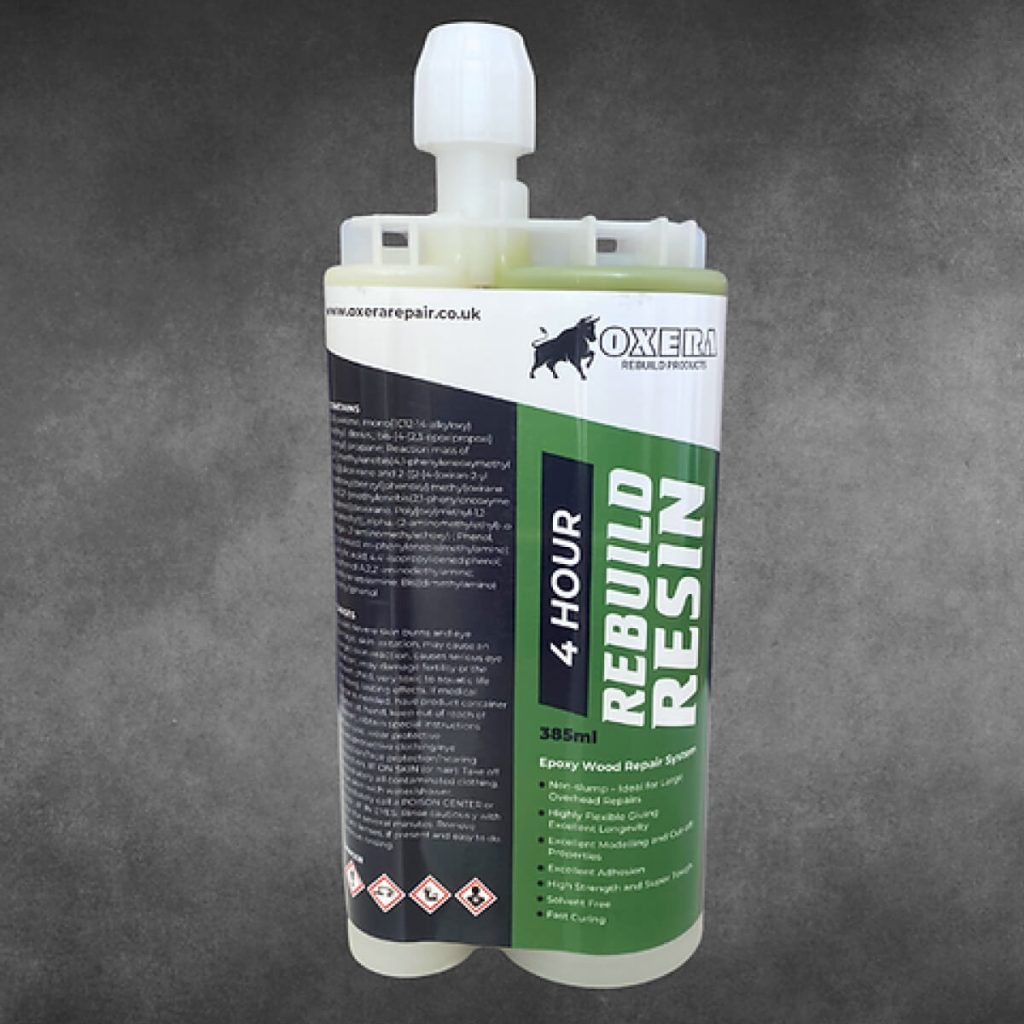
Two-part polyester fillers offer an excellent solution for deep durable repairs which need the fast 30-minute curing time. The high strength of these materials makes them superior to ready-mixed fillers which makes them suitable for medium-sized repairs.
Best for: All-Round Performance
Ronseal’s High Performance Wood Filler is a decorator’s staple. This two-part system provides reliable performance through its ability to fill any depth and fast 30-minute setting time.
The material achieves wood-like versatility because it allows users to drill, screw and plane after it reaches its cured state. The product creates a strong waterproof repair which allows wood movement to continue naturally.

Best for: Colour Matching
The professional community shows preference for Everbuild Two Part Filler because it functions as a direct competitor to Ronseal Two Part Filler. The product delivers a fast 30-minute curing time together with a shatterproof final surface.
The product stands out because it provides multiple colour options which help users find the perfect match to their wood surface especially when staining instead of painting. For painting advice, see our guide on the best exterior wood paint.
The ready-mixed filler stands out as the most convenient choice for fixing small non-structural damages. These products are perfect for filling nail holes, small cracks, and minor imperfections quickly and easily.
Best for: A Smooth, Easy-to-Sand Finish
Toupret is a brand that stands for top-quality fillers and their ready-to-use wood filler product continues this tradition. The Toupret formula stands out because it delivers both smooth application and easy sanding which results in a perfect finish.
The product provides a longer working time compared to other brands which enables you to enhance your repair work.

Best for: General Purpose Repairs
Polyfilla is a household name, and their wood filler is a reliable choice for general interior and exterior repairs. The product dries quickly while showing low odor and becoming water-resistant after the curing process.
The product allows for both nailing and screwing which makes it useful for various small tasks in the house and garden.
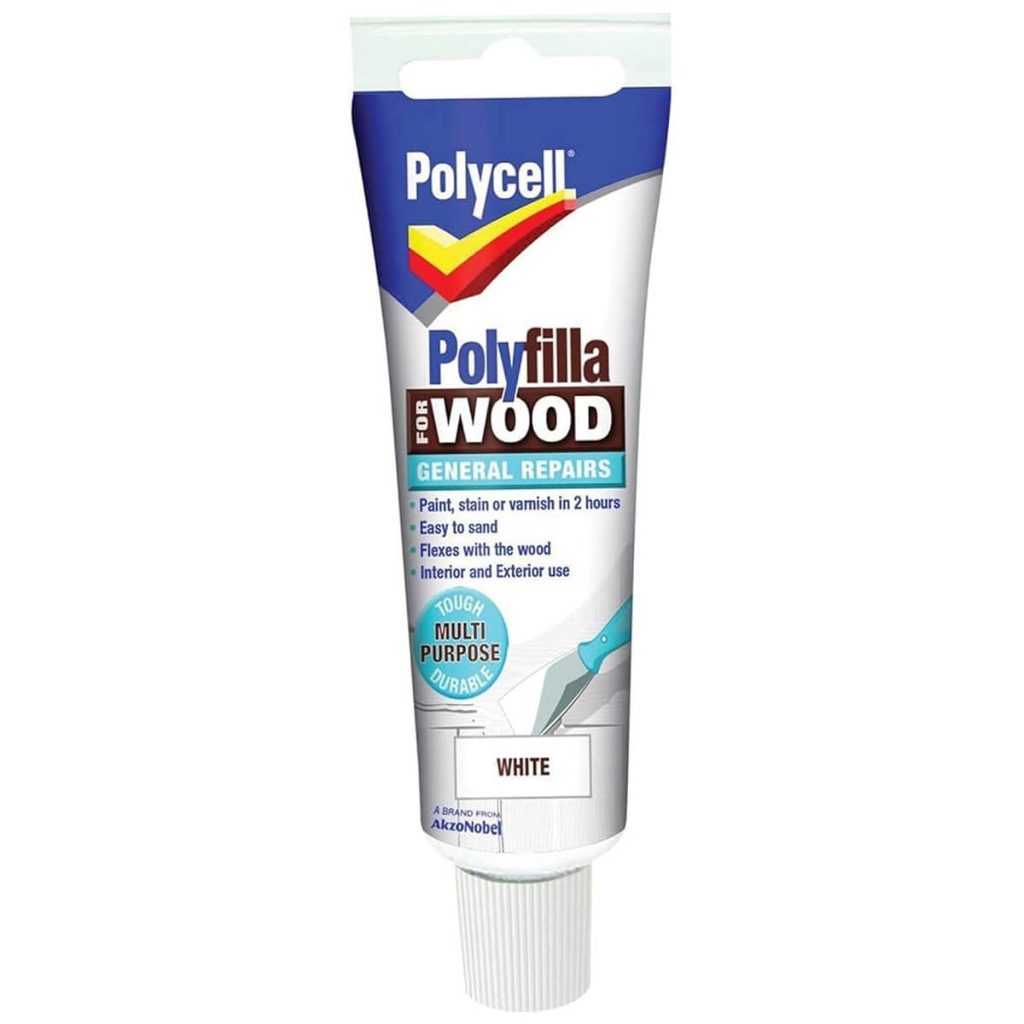
Best for: Flexibility in a Tube
The Multi Purpose filler by Ronseal provides flexibility to match wood movement which makes it ideal for joints and other areas that experience movement. The product comes in various colours which users can apply through both tub containers and tube packaging.
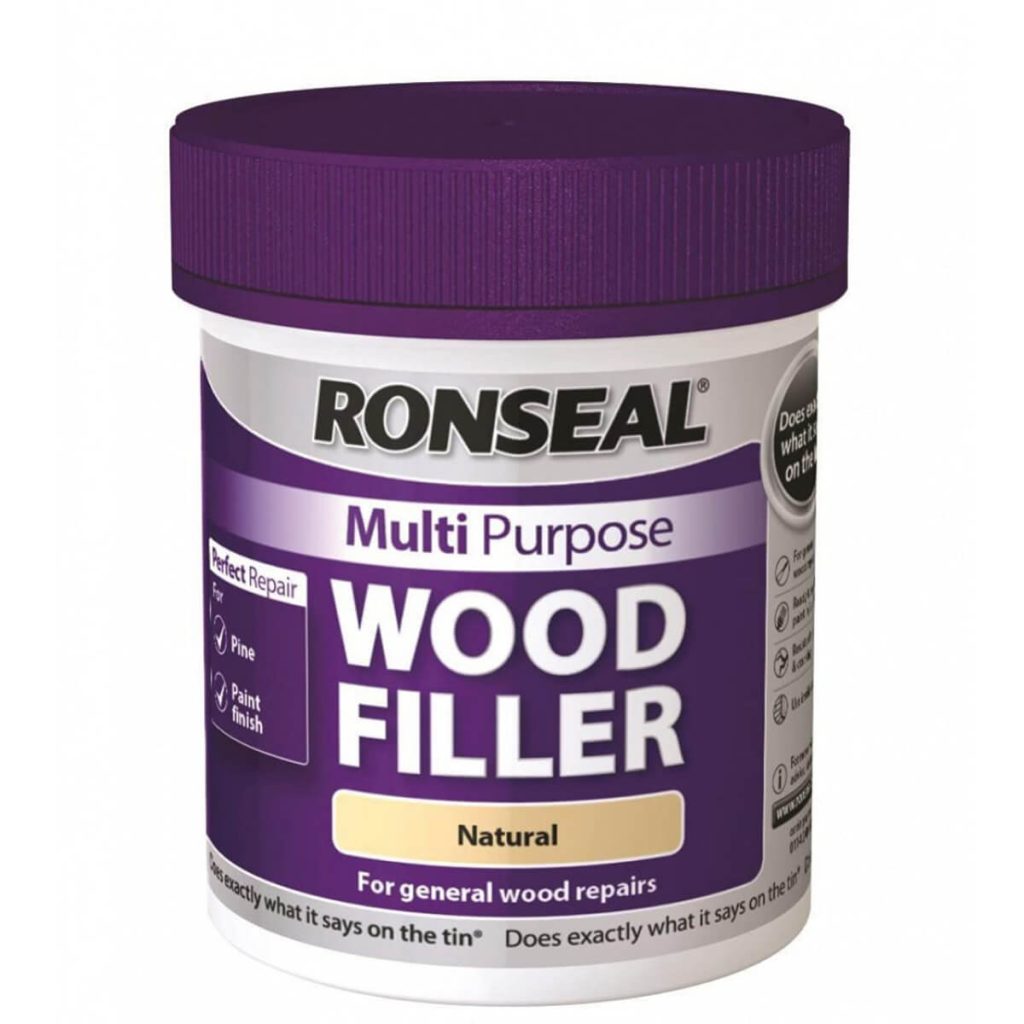
The quality of professional repairs depends on the quality of the foundation that supports the work. The application of any filler material will lead to failure when applied to soft punky wood. The first step requires a wood hardener which penetrates timber to solidify decayed fibers and form a stable surface for filler adhesion.
Best for: Damp Wood and Ease of Use
Toupret’s Wood Hardener stands out as a top choice because it works on wet wood surfaces which makes it ideal for the changing weather conditions in the UK. The water-based solution penetrates the wood to strengthen its core structure. The product functions on damp surfaces which enables workers to complete their tasks more quickly.
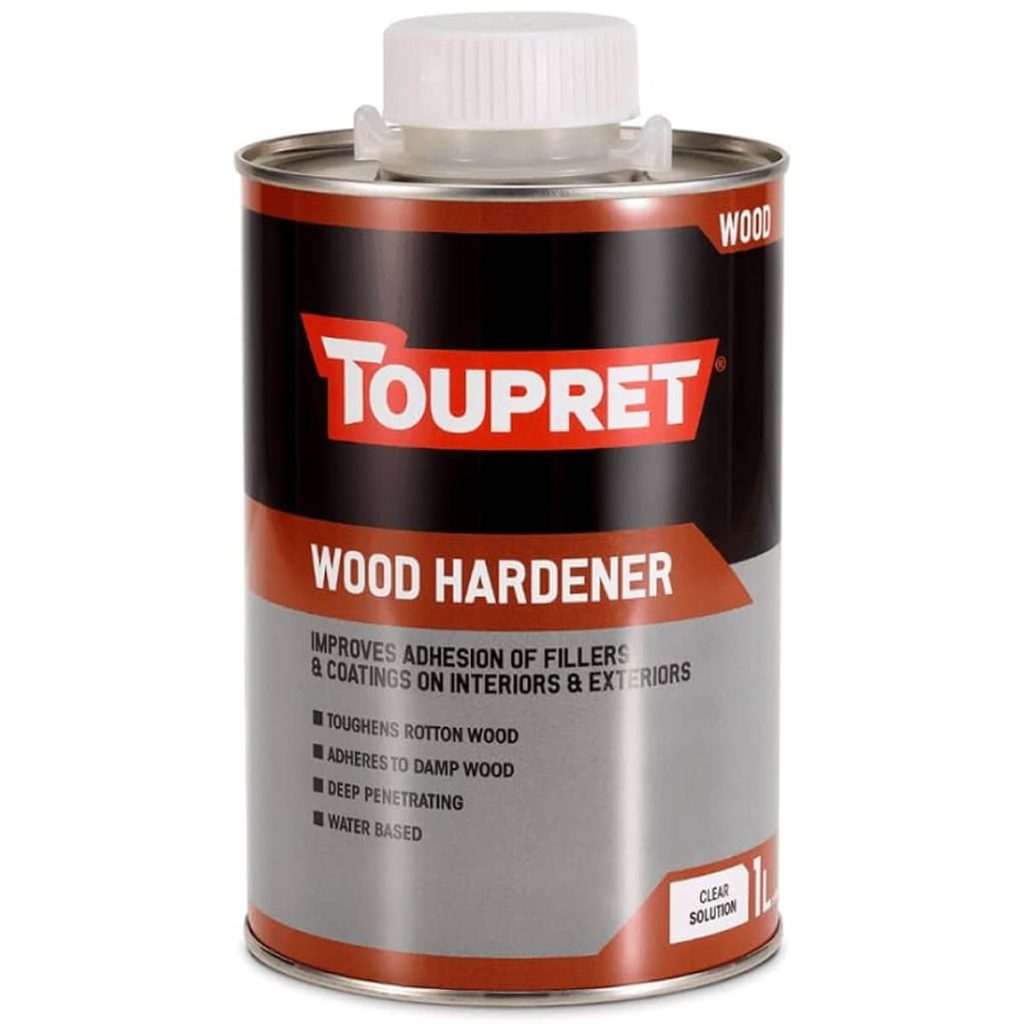
Best for: Severely Rotted Wood
Ronseal’s Wood Hardener is a solvent-based solution which penetrates deeply to strengthen timber that has advanced rot damage. The system functions as a base for their High Performance Wood Filler to form a complete repair solution. The product has been a trusted choice for decorators since its initial release.
The selection of the correct product represents the initial stage of the entire process. A durable invisible repair depends on two essential factors which include correct preparation and precise application. Follow these steps for professional results every time.
Step 1: Remove All Rotted Wood Using a sharp chisel, scraper, or even a multi-tool, carefully remove all the soft, decayed, and friable wood. You must get back to sound, solid timber. Any rot left behind will continue to spread and cause the repair to fail.
Step 2: Apply a Wood Hardener Once all the loose material is removed and the area is clean, liberally apply a good quality wood hardener like Toupret Wood Hardener. The wood needs to absorb all the liquid before you stop brushing.
The process stabilizes the surrounding wood while providing a secure base for the filler material. The drying process requires following the complete instructions of the manufacturer.
Step 3: Mix and Apply the Filler For two-part fillers, mix only what you can use within the product’s working time (usually 5-10 minutes). Combine the ingredients completely on a clean surface until the color appears consistent throughout.
The filler needs to be firmly pressed into the repair area to remove all air pockets. Overfill slightly to allow for sanding.
Step 4: Shape and Smooth The shaping process of filler material requires a sharp knife or scraper before the material reaches complete curing. The tool will help you finish the sanding process faster. The epoxy filler requires special tools to form it into complex shapes.
Step 5: Sand to a Final Finish The filler needs to reach its full cure before you start sanding it to achieve a level surface with the surrounding wood.
Begin the sanding process with 80 or 120-grit sandpaper followed by 180 or 240-grit sandpaper to achieve a smooth surface for priming and painting. You can read our guide to choosing the best sandpaper.
Step 6: Prime and Paint Always prime your filler repair before painting, even if the filler says it is not required. The primer creates an optimal environment for paint to bond properly to the surface while giving backers a uniform surface to work with.
The repair requires exterior paint protection after priming to shield it from weather damage. Our guide on repairing timber french doors provides detailed instructions for specific item repairs.
The highest quality repair results become unattainable through product use when basic errors occur during the repair process. The following list contains the most frequent mistakes which people should avoid.
The term “wood filler” functions as a general descriptor for various products which exist in the market for different applications. The selection of the best solution requires matching the appropriate product to the specific task instead of searching for a universal solution.
The selection of fillers for different repair needs enables you to create durable and professional long-lasting repairs.
The following recommendations provide guidance for the situation at hand:
The selection of filler material determines project success. The first step requires you to remove all damaged wood before applying a top-quality Wood Hardener to stabilize the area.
The correct procedures combined with suitable products enable you to repair exterior wood with confidence because they produce results that look great and remain durable.
No. The interior fillers lack the ability to handle moisture exposure and wood movement because of temperature fluctuations. The materials will break down rapidly when they come into contact with natural weather elements.
This depends entirely on the product and its cure time. The fast-curing two-part filler requires 30 minutes to become paint-ready but epoxy systems need 4 to 16 hours of curing time. Always check the manufacturer’s instructions.
Some fillers are stainable, but it can be difficult to achieve a perfect match with the surrounding wood. The Everbuild 2-Part Filler comes with different color options that help users select the right shade. This problem does not occur with painted repairs.
For any structural repair on a window frame, a flexible epoxy system like Repair Care DRY FLEX 4 or Timbabuild EHB60 is the best choice. Toupret Wood Filler serves as an excellent choice for small cosmetic repairs.
If the wood is even slightly soft or punky after you have removed the loose rot, then yes. A hardener is essential for creating a solid base for the filler. Soft wood serves as the primary factor which leads to repair failure when applying filler.